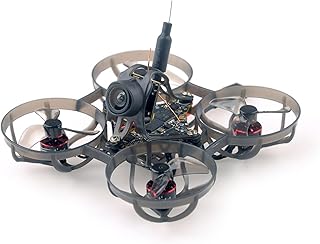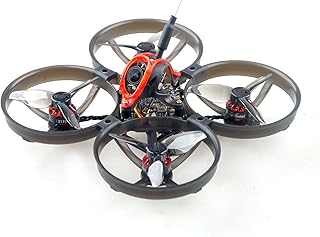SPEEDY BEE Drone: A Comprehensive Guide
While there isn't a specific drone model called "SPEEDY BEE", this guide can help you understand what to look for and consider when choosing a drone, especially if you are interested in a fast and agile drone for racing or freestyle flying.
I. Key Features to Consider:
1. Size and Weight:
* Micro Drones: Small, lightweight, and incredibly agile, perfect for indoor flying and freestyle. They are typically less powerful and have shorter flight times.
* Mini Drones: Larger than micros, they offer more power and endurance, making them suitable for outdoor flying and racing.
* Standard Drones: Larger and heavier, providing greater stability and power, but sacrificing agility.
2. Power and Speed:
* Motors: Brushless motors offer more power and efficiency than brushed motors. Look for powerful motors with high Kv ratings for faster speeds.
* Battery: Higher mAh batteries provide longer flight times, but weigh more. Consider the tradeoff between flight time and weight.
* ESC (Electronic Speed Controller): Determines the speed and responsiveness of the motors. Choose a high-quality ESC with features like BEC (Battery Eliminating Circuit) and programmable settings.
3. Flight Controller and Firmware:
* Flight Controller: The "brain" of the drone, responsible for controlling the motors and receiving commands from the transmitter. Look for a reliable flight controller with good processing power.
* Firmware: The software that runs on the flight controller, determining the drone's flight behavior and features. Some popular options include Betaflight, iNav, and Ardupilot.
4. Transmitter and Receiver:
* Transmitter: The device you use to control the drone. It should have multiple channels, adjustable settings, and good range.
* Receiver: The component on the drone that receives signals from the transmitter. It should be compatible with your transmitter and offer reliable communication.
5. Camera and Video Transmission:
* Camera: Essential for capturing footage. Consider the resolution, field of view, and image quality.
* Video Transmission System: Allows you to view the camera feed in real-time. Choose a system with good range and low latency.
6. Safety Features:
* GPS: Provides location information for autonomous flight modes and failsafe functions.
* RTH (Return to Home): Allows the drone to automatically return to its starting point.
* Failsafe: A backup system that activates if the drone loses communication with the transmitter.
II. Choosing the Right Drone for You:
* Define your purpose: Are you looking to race, freestyle, film, or just have fun? This will guide your choice of drone type and features.
* Consider your skill level: Beginners may want to start with a more beginner-friendly drone with stability features and failsafe options.
* Set a budget: Drones range from affordable beginner models to high-end racing machines.
* Read reviews and compare features: Research different drone models to find one that meets your needs and budget.
III. Additional Tips:
* Invest in quality batteries and chargers: They are essential for reliable performance and longer flight times.
* Learn about drone regulations in your area: Make sure you are aware of the legal requirements and limitations for flying drones.
* Practice and improve your skills: The more you fly, the better you will become at controlling your drone.
IV. Where to Buy a Drone:
* Online retailers like Amazon, Banggood, and Gearbest offer a wide selection of drones.
* Local hobby stores may also carry a range of drone options.
V. Resources for Learning More:
* Drone forums: Join online forums to connect with other drone enthusiasts, share tips, and get support.
* YouTube channels: Many YouTube channels provide tutorials and reviews of drones, offering valuable insights.
* Drone clubs: Join a local drone club to meet other pilots and learn from experienced flyers.
Remember, flying drones is a hobby that requires knowledge, responsibility, and respect for safety regulations. Enjoy the experience and fly safely!


